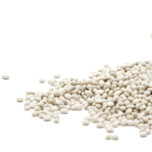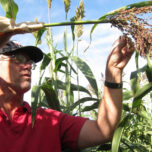November 14, 2018 — Phosphorus from fertilizer running off cropland has been identified as the main culprit behind Lake Erie’s algal woes, and the potential for governments in my province of Ontario and elsewhere to implement farm-level regulations has some farmers nervous.
Why? Because farmers and the conditions in which they work are so diverse, otherwise well-meaning regulations could, if too rigid, restrict farmers’ ability to manage fertilizer runoff in a way that’s best for their farms and the lake.
Any new regulations designed to limit fertilizer runoff should be flexible. Policy-makers need to account for the vast ecological and economic diversity within agricultural landscapes, as well as the long-standing and widespread runoff-reducing practices already employed by farmers on their own and through existing partnerships with governments, conservation organizations and others.
Such flexibility in regulation, along with education and cost-share programs, will have the most likelihood of achieving the goals everyone wants — clean water, well-functioning farms and the ability for farmers to continue to produce the food everyone needs.
4R Stewardship
The idea that farmers carelessly spread fertilizer that then ends up in Lake Erie is largely not based in an understanding of modern agronomy. Fertilizer can be very expensive, after all, and it’s in farmers’ best interest that it stays put.
Fertilizer can be very expensive, after all, and it’s in farmers’ best interest that it stays put.To that end, farmers and farm families like mine actively use “4R Nutrient Stewardship,” — that’s getting the right fertilizer to the right place at the right time, and in the right amount.
Farmers pursue 4R stewardship in many ways. The advent of GPS, drone and satellite imaging technologies, for example, make it possible for farmers to create fertilizer “prescriptions” for their fields based on detailed soil fertility maps. This allows for what’s called “variable rate application,” where the amount of fertilizer applied can differ within individual fields based on need.
Granted, not everyone has access to these technologies to the same degree (our home farm is analog, for the most part), and the equipment needed is not cheap. But many do — and that number increases every growing season.
Practices such as applying fertilizer in winter or early spring are both rare and heavily discouraged by Ontario’s agriculture community since the risk of losing fertilizer to surface water is much greater during those times. Even different tillage techniques can help incorporate fertilizer into the soil and reduce the risk of runoff.
Localized weather networks can also help farmers predict when — and when not — to head into the field. A notable example in my home area uses 280 small weather stations across Ontario’s most southern counties to map field conditions at the meter level. Customized notifications for when it’s a good time to bring the fertilizer wagon in or out of the field are sent directly to subscribing farmers’ phones in real time.
Planting cover crops during the off-season can also help. These include a diverse array of non-commodity plants, such as alfalfa, buckwheat and cereal ryegrass. While these plants certainly bring their own management difficulties, the roots and above-ground greenery can offer a number of environmental benefits, including increased water retention through higher soil organic matter, less soil compaction and reduced erosion risk through the winter.
But not all cover crops are the same. They can be expensive to plant, and it can be a challenge to manage them in a way that doesn’t negatively affect the crops farmers rely on for income. That’s why farmers actively experiment with different species — as well as species mixtures — to determine which ones best suit their goals.
As Henry Denotter, a farmer colleague of mine, says, “We’ve tried a lot of different things over the years, and there’s a lot to try yet. Not all cover crops are glorious — it has to make economic sense. … More cover is not necessarily better.”
Farm-level Measurement
Every field is different, from soil and crop type to elevation and disease pressure. This reality, combined with the variability in agronomic practices, means the amount of phosphorus lost from farmland varies dramatically. Even farmers who are doing everything in their power to mitigate runoff can be unwitting contributors. Consequently, initiatives are underway to actively measure how much phosphorus is actually being lost.
In Chatham-Kent County — a key area in Ontario’s Lake Erie watershed — government, farmers, conservation organizations and others have collaborated to incorporate phosphorus filtration systems into drain tile systems on farms throughout the region. The objective is to find workable solutions to remove phosphorus from water at the field level while calculating how severe the problem truly is (when and how much phosphorus is being lost). This includes determining the role of legacy nutrients — phosphorus that was previously absorbed in, and is now being slowly released from, the silts of Lake Erie’s contributing waterways.
Aim for Flexibility
The International Joint Commission — an organization created by Canada and the United States to act as an independent advisor on boundary-water issues — reports that voluntary farmer efforts to reduce runoff have been inadequate. The 40 percent reduction in phosphorus loading the commission says is necessary is indeed significant, and it’s perhaps not surprising this hasn’t been met by Canadian and American growers.
Rather than regulation, however, perhaps that goal could be met through more pointed outreach and environmental project support. Take Ontario’s Environmental Farm Plan (EFP) program as an example.
The EFP is a government-supported program where farmers identify ways to reduce their farm’s environmental impact, then develop and implement plans to make the needed improvements. This can include everything from farm waste disposal to woodlot and floodplain management. The EFP can then be used in conjunction with cost-share programs to begin implementing the action plans. As of 2011, 35 percent of Ontario farms have a customized EFP.
 The significant expense of implementing cover crop regimes or buying more conservation-oriented equipment is undoubtedly a major barrier to the adoption of more intricate nutrient management strategies. Might more targeted, government-supported cost-share programs be a better way to accomplish at least a significant portion of that 40 percent reduction target? Perhaps Ontario’s EFP program — which already includes nutrient runoff prevention as one of its support areas — provides an effective framework.
The significant expense of implementing cover crop regimes or buying more conservation-oriented equipment is undoubtedly a major barrier to the adoption of more intricate nutrient management strategies. Might more targeted, government-supported cost-share programs be a better way to accomplish at least a significant portion of that 40 percent reduction target? Perhaps Ontario’s EFP program — which already includes nutrient runoff prevention as one of its support areas — provides an effective framework.
And let’s not forget the importance of communication. It’s commonly held that farmers learn best from other farmers, so communicating the options available to their peers is critical. Extension efforts on the part of government, conservation organizations and farm groups are and will continue to be critically important in reducing nutrient inputs to Lake Erie.
Environmental Complexity & Business Pressures
Is agriculture blameless in Lake Erie’s eutrophication plight? Of course not. Does more need to be done at the farm level? Most certainly. But no two fields are the same, and like it or not, farms still need to be economically viable — meaning agronomic decisions must be financially reasonable. More targeted cost-share programs that encourage flexible field-level solutions rather than blanket prescriptions are the best way forward.
Tied to the land and water as we are, farm families like mine are always considering the impacts our growing practices have on the environment. Tied to the land and water as we are, farm families like mine are always considering the impacts our growing practices have on the environment. We, like the rest of the community, very much value Lake Erie — as a source of recreation and industry, as well as for its natural beauty and biological importance — but we need to stay in business, too.
As Louis Roesch, a grain and livestock farmer from Chatham-Kent who is participating in the phosphorus filtration initiative, said during a public demonstration of the system installed on his farm, “A bad regulation can close a business. We need to have the data first — then we have something to follow.”
My dad often expresses a similar sentiment, though perhaps, as is his style, more laconically.
“We can’t grow crops without fertilizer. If they take that away, we’re done.” ![]()
Editor’s note: The views expressed here are those of the author and not necessarily of Ensia. We present them to further discussion around important topics. We encourage you to respond with a comment below, following our commenting guidelines, which can be found on this page. In addition, you might consider submitting a Voices piece of your own. See Ensia’s Contact page for submission guidelines.
Related Posts
Ensia shares solutions-focused stories free of charge through our online magazine and partner media. That means audiences around the world have ready access to stories that can — and do — help them shape a better future. If you value our work, please show your support today.
Yes, I'll support Ensia!


